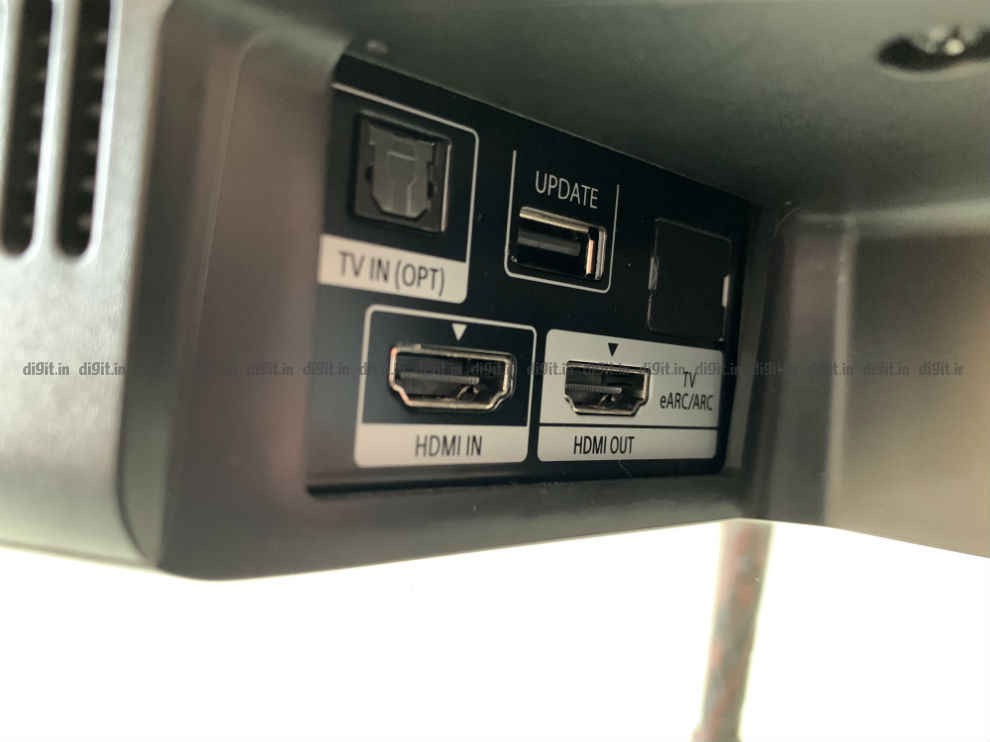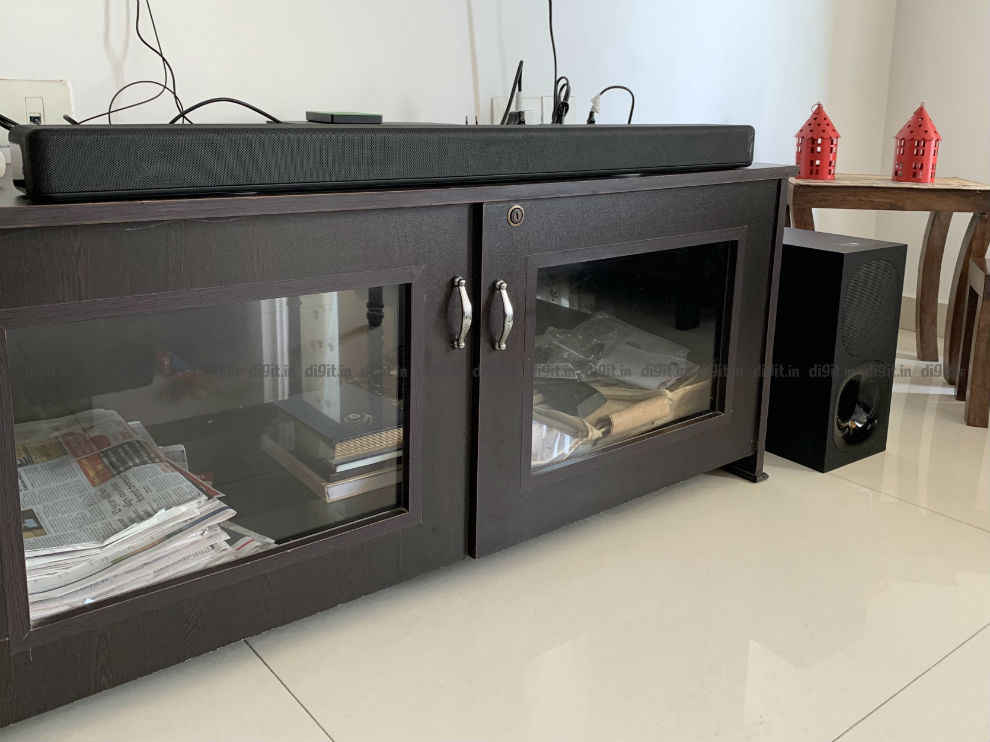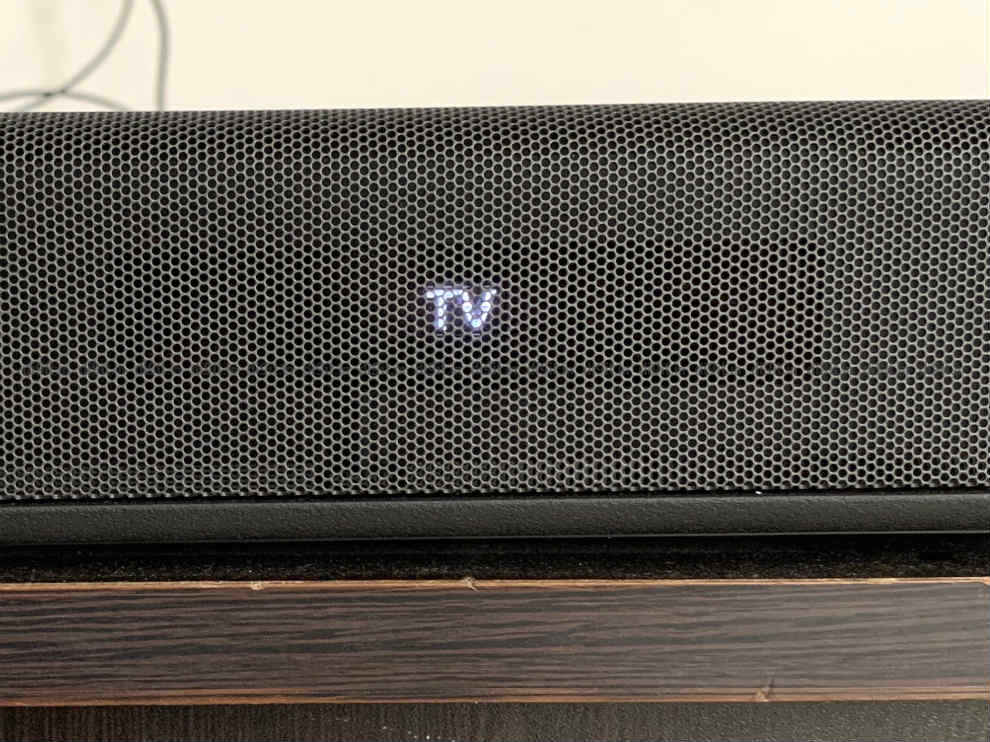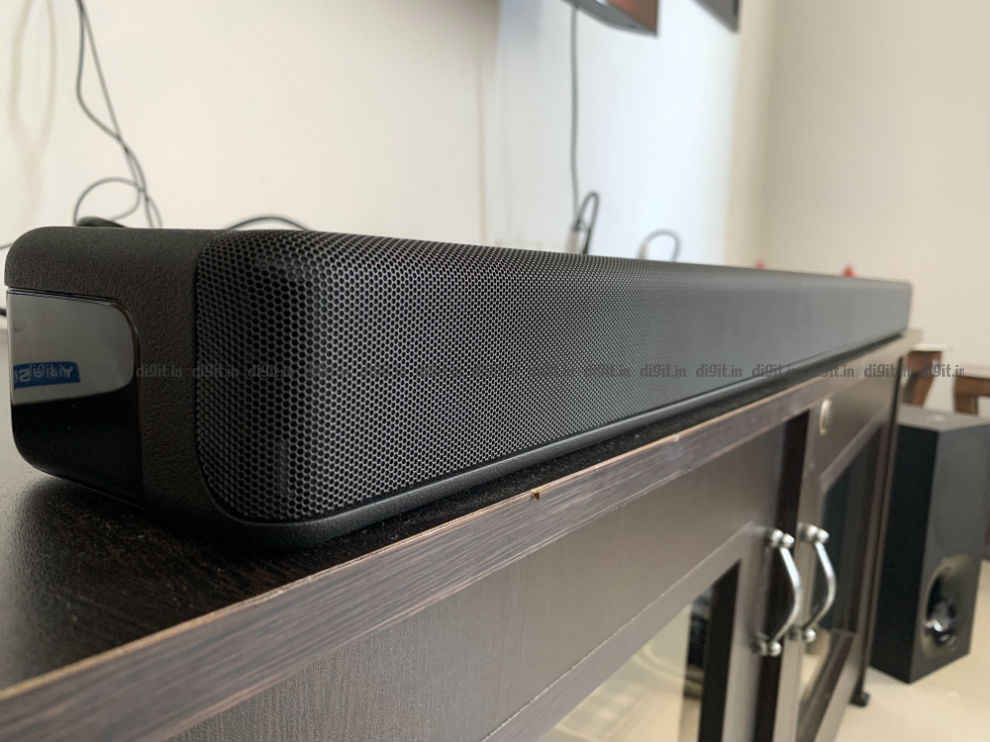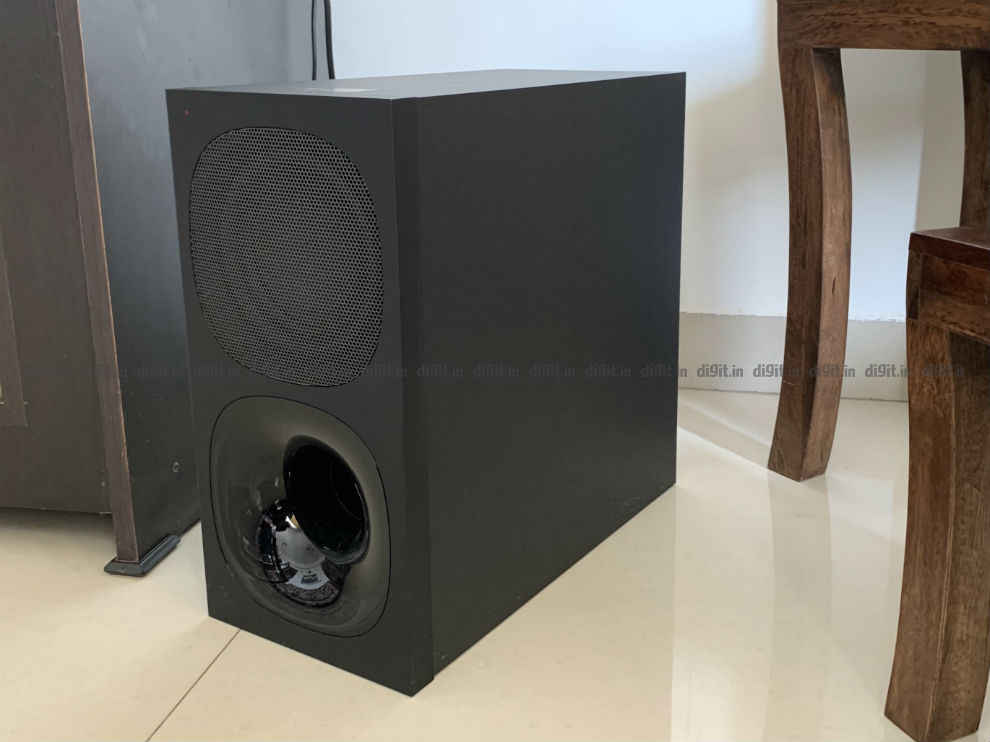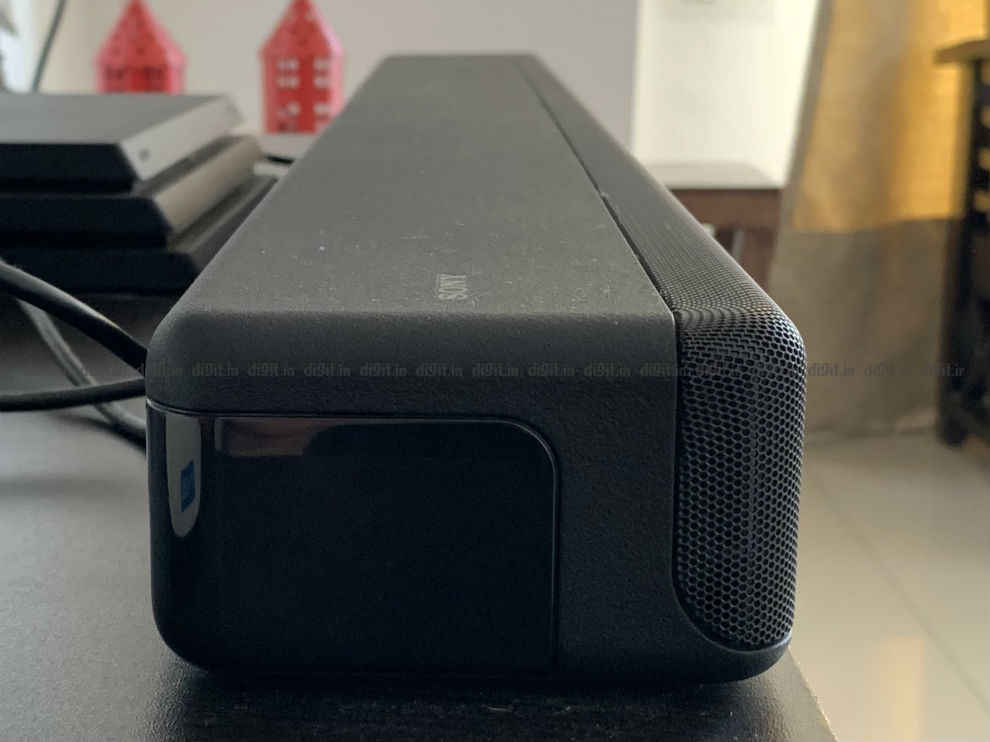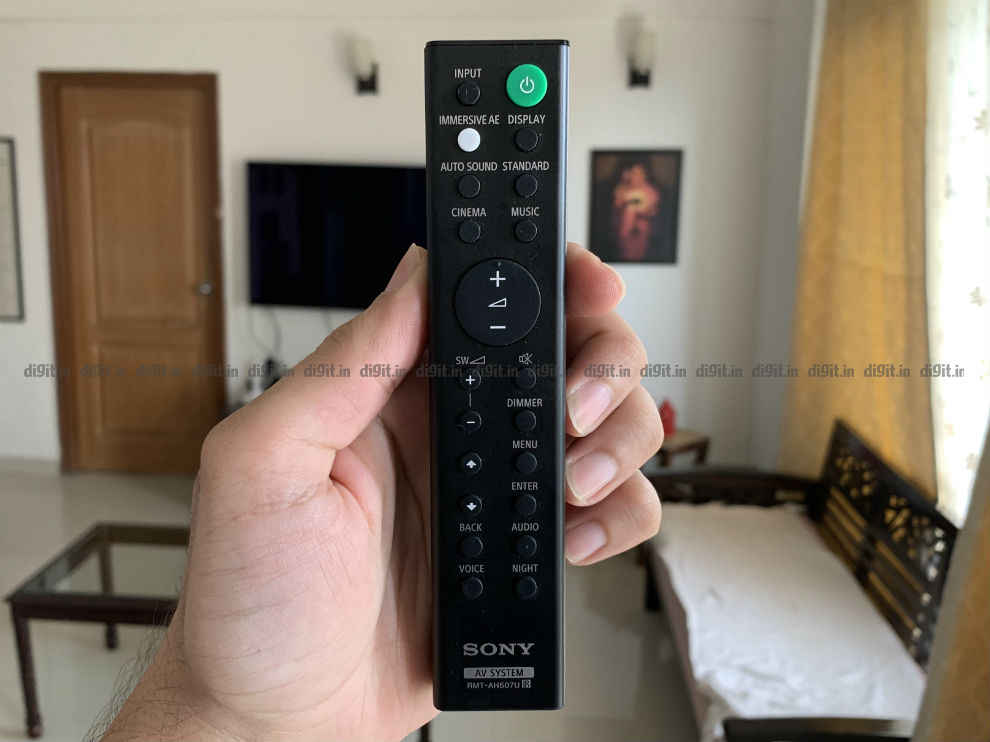Sony HT-G700 Dolby Atmos soundbar Review : Sublime Sound
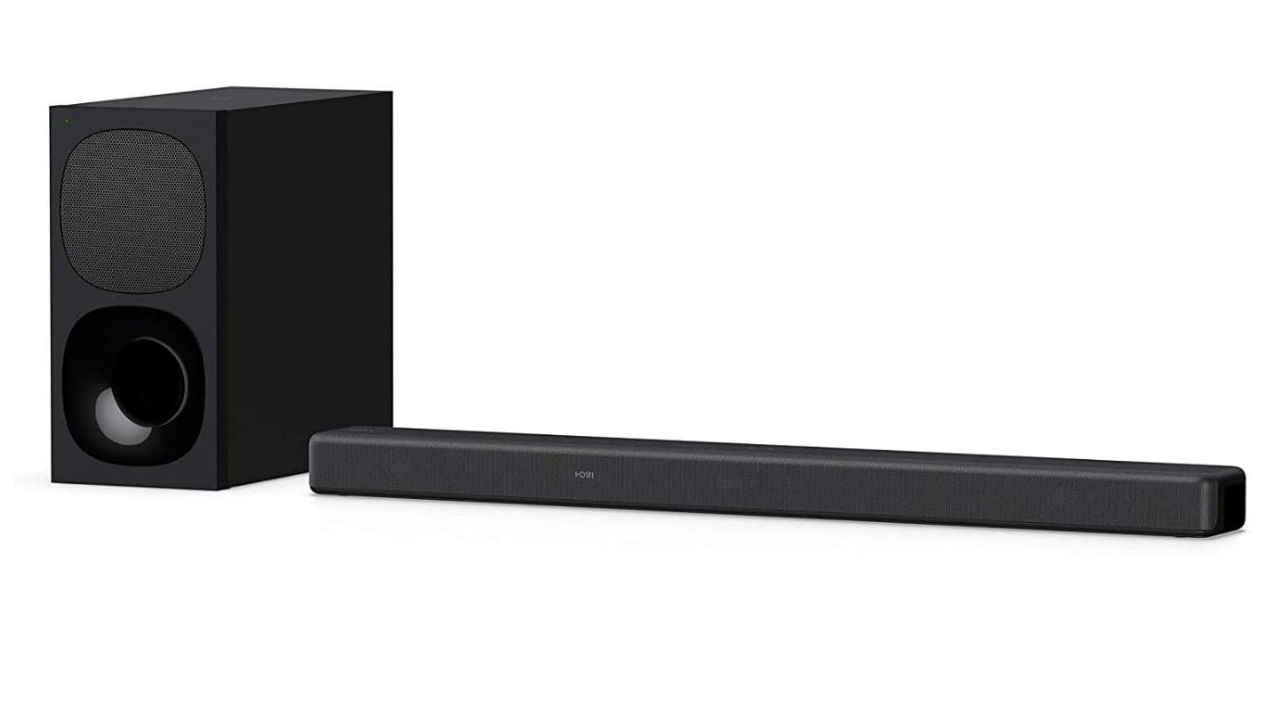
If you have a budget of 40K for a premium soundbar then yes, you can consider the Sony HT-G700. It has fantastic sound output, supports Dolby Atmos, 4K HDR passthrough with Dolby Vision support and a simple plug and play setup. What it lacks is any form of internet connectivity or app controls. For Dolby Atmos support, don't expect the sound to come from on top of you or behind you. However, the sound from the soundbar is loud, clear and has a wide soundstage when consuming content sitting in the sweetspot. With Immersive AE turned on, you do get clearler audio especially the separation between the dialogues and background score. With eARC support the soundbar is futureproof as well.
Soundbars have cemented themselves as must-haves if you want to enhance the sound from your flat-screen TV without investing in a dedicated home theatre setup. The biggest advantage of a soundbar is that it is easy to set up and with connectivity like HDMI ARC (or in this case eARC), and can also decode audio formats like Dolby Atmos. Whether they can simulate surround sound effectively is a debate for another day. Today we have with us the Sony HT-G700. It is a 3.1 soundbar and brings with it a host of features like HDMI eARC along with HDMI passthrough, support for Dolby Atmos and a wireless subwoofer. Being a simple 3.1 setup, this soundbar claims to give you an immersive surround sound experience. Does it deliver?
Sony HT-G700: What’s in the box
In the box, you get the soundbar itself along with a wireless subwoofer. You also get the remote control in the box, an HDMI cable, and wall mounting brackets. You also get two AAA batteries. The remote control accompanying the system is compact and has all the essential functions. It is very reminiscent of the remote control we saw with the Sony HT-S20R (review) and that's a good thing. Instead of Sony’s Vertical Surround found on the remote control of the HT-Z9F (review) of the Sony HT-X8500 (review), we have an Immersive AE button and we will talk more about that in the performance section. Know that when you use ARC (or eARC) to connect the soundbar to the TV, you can control the bar from the comfort of the TV remote.
Sony HT-G700 Connectivity options
When it comes to connectivity options, the soundbar has an HDMI port for eARC and one HDMI passthrough port that supports 4K HDR passthrough including Dolby Vision at 4K/60P/YUV 4:4:4. It also boasts of Sony’s BRAVIA SYNC which means that you can connect the soundbar wirelessly to some Sony Bravia TVs. At a similar price point, we have seen soundbars like the JBL SB450 (review) with 3 HDMI passthrough ports with 4K HDR support (but no support for Dolby Vision). The Sony HT-G700 also has an optical port, USB port and also supports Bluetooth 5.0 for wireless connectivity.
We have seen the Yamaha YAS-209 bring with it support for Wi-Fi and Ethernet along with Alexa built-in. You can also control the Yamaha with a dedicated smartphone app. All these features are missing in the Sony HT-G700 and if you want them on a Sony soundbar you will have to consider the HT-Z9F.
The Sony HT-G700 soundbar does boast of support for DTS-X and Dolby Atmos which is nice. However, without top firing speakers or rear speakers, we were interested to see how the object-based surround sound works on this bar.
Setting up the Sony HT-G700
Setting up the soundbar can be done in less than 5 minutes. The soundbar connects wirelessly to the subwoofer. Just connect the two to a power supply, connect the HDMI cable to the ARC port of your TV and to the HDMI out port on the soundbar and you are good to go. Just remember, that some TVs need you to manually change to ARC in the sound settings.
With eARC support, this soundbar is future proof and will work with 2019 and 2020 flagship TVs that support eARC. Put simply, eARC has higher bandwidth than ARC and also gives the bar access to DTS: X and Dolby Atmos content.
Once the soundbar and subwoofer are plugged in and turned on, you should see a green light in the front top left corner of the subwoofer. If the light is red, it isn't synced to the soundbar. If it's green, it is connected and good to go.
Sony HT-G700 Build and Design
A premium finish is the first thing that comes to mind when you first look at the soundbar. Unlike the HT-Z9F which has a glossy finish, this one has a matte finish and the front grill is not removable. It has an industrial design with slightly curved edges and a certain amount of heft to it. Even though the soundbar has chunky depth to it doesn't look intrusive when you look at it from the front. It is only from the side that you realize how big the soundbar is and that is not at all a bad thing considering it has excellent construction and build quality.
All the ports are conveniently located at the back of the soundbar in a cavity making cable management easy. The soundbar also has a display in the front and it only comes on when the soundbar is on. Place the soundbar under a TV ranging from 50-inches to 65-inches and it will look right at home.
The wireless subwoofer is big and quite heavy. The subwoofer is front-firing with the pairing button hidden at the back. The subtle green light in the front indicating that the subwoofer is connected to the soundbar is a nice touch. There are times when one feels the subwoofer has probably disconnected from the soundbar and one look at the tiny green light washes those doubts away. It is a subtle thing, but one I truly appreciate as I don't need to get up and go to the back of the soundbar to see if the connection is stable.
The soundbar also has touch controls on the top to control things like power, source, Bluetooth and volume.
Overall, the Sony HT-G700 is a very well built premium soundbar with a simple industrial design.
Sony HT-G700 Performance
Before we get into the pure sound performance of the soundbar, let's get a few things out of the way. Firstly, unlike the HT-Z9F that gave you an on-screen menu when connected via HDMI, this one does not. You have to rely on the small display on the front of the soundbar if you want to change any settings. While it is functional and gets the job done, the lack of the ability to go through the settings on your big screen is a tad disappointing especially when the setup experience on the HT-Z9F was so simple and easy to use. But then again, this bar is meant to be more of a plug and play solution with fewer options to tinker, so someone like me who likes to dive into the settings is just nitpicking here.
Secondly, even though the soundbar supports Dolby Atmos and DTS:X don't expect the sound to come from on top of you or from behind you. At best, expect a wider soundstage from the front when consuming content. Having said that, I think we should all set our expectations realistically about surround sound without dedicated surround speakers. Unless we are talking about something like the Sennheiser Ambeo or the Sony HT-ST5000.
Let’s break down the performance of the soundbar into movies, music and gaming performance.
Movies
Holy smokes! This soundbar is loud. I placed it in my living room, which for reference is about 20 foot by 13 foot. I was sitting 6 feet from my TV smack bang in the middle of the soundbar and I was blown away with how loud this soundbar can get. The soundbar has 400W of output and you can feel it especially when you put the volume all the way up to 80 percent. In a movie like “A Quiet Place,” the sound was set to 75 percent volume and there was pin-drop silence before one of the characters screamed on screen and the background music kicked in and the clarity of the sound along with volume was truly immersive.
Even in a movie like Mission Impossible which has Tom Cruise swishing across the screen on a motorcycle, the channel separation from left to right was superb. Even the dialogues spoken during action sequences are extremely clear. All the above content is in 5.1 through OTT services.
Netflix is one service provider that offers movies and TV shows in Dolby Atmos. And like I said above, don't expect the sound to come from on top of you. If anything, expect a little more clarity in the dialogues spoken. Also, the little white button on the remote control called “Immersive AE” will not work when streaming Dolby Atmos content as it is meant to “upscale” non-Atmos content to surround sound.
Sitting 6 feet away, whether watching Atmos or 5.1 content from OTT service providers, one thing is clear, the sound will immerse you just because how loud the soundbar can get and for that reason alone this is great for watching movies. When watching non-Atmos content you can switch on the Immersive AE button and if nothing else, it makes the dialogues a lot clearer and the left and right channel separation is more pronounced. For watching content that has a lot more dialogue, I found myself using the Immersive AE mode more than the voice mode to have better dialogue clarity.
Overall, for movie watching the Sony HT-G700 is a great experience provided you don't expect to hear the rain from above you.
Music
The Music performance of the Sony soundbar is what you’d expect from a Sony speaker. If you love music with good bass then this soundbar will not disappoint. If you want the extra thump, you can always increase the level of the subwoofer, but somewhere between 5 and 7 (12 being the maximum) is where I left it most of the time. I also heard Bang Bang by Will I Am and the bass along with the orchestra of instruments in the song made me want to dance and my neighbours eventually had to call and ask me to turn the volume down at 10 in the night. Yes, I'd like to emphasize again, this soundbar can get plenty loud.
Until now the best music experience from a soundbar for me has been from the Yamaha YAS 209 for 2 reasons. Firstly, when in stereo mode and listening to music, the bass is just right, not too overpowering and only showing its presence when needed. And secondly, the stereo separation when listening to music is almost as good as a stereo bookshelf setup for listening to music especially if you sit in the sweet spot. Comparing the Yamaha to the Sony the Sony HT-G700 is much louder, and better suited for that party at home. It also has a more commanding presence with bass, so bass lovers may prefer the Sony. But in music mode, the Yamaha still presents better stereo separation.
Gaming
For gaming, we played Marvel Spider-Man, The Last of Us Part II, Ghost of Tsushima, God of War and Doom. Channel separation works well in all the games, especially when playing Spider-Man. You can hear the city pass you when swinging with chatter from the street clearly audible. Once again for gaming, I kept the Immersive AE mode on which helped with clever dialogue and easier separation of background sound from what's happening right next to you. Even in the Last of Us Part II, when the emotional background score kicks in the soundbar shines. Even with bullets whizzing by you and enemies calling out to each other, you kinda know where to look based on the channel separation.
Dooms soundtrack is another one that sounds really good on this soundbar with deep rich bass, great bangs for the guns and the signature grunts of the demons. The bass from the sub when playing doom was room-filling.
Overall, the Sony HT-G700 is great for gaming. Dialogues are clear, sound effects crisp and Immersive.
By now you probably think I am in love with the sound output from this soundbar and you are right in thinking so. It checks all the right boxes for me. There is no complication with the sound modes and there is no customization needed. You could simply leave it on auto and forget about the rest. For movies, TV shows, gaming and even music, the soundbar is a great one-stop-shop. If you like, you can also dim the display of the soundbar when consuming content in a pitch dark room.
So what's missing? Well, for one thing, I wish there was an app that could be used to control the soundbar. Once you connect it via ARC, you can control the volume using the TV remote control. So I tucked the Sony remote away for safekeeping and every time I needed to tinker with the settings I had to hunt for it. The Yamaha YAS 209 can be controlled completely with the companion app and the convenience of that is missing from the Sony.
Sony HT-G700 Remote control
Speaking of the remote control, the bundled remote control with the soundbar is simple. All the buttons are neatly laid out in two rows. On the remote control, you have the options for input, control for the various modes, a mute button. Buttons like ‘Voice’ help with boosting the vocals if you like whereas functions like Night ensure the bangs in action movies don't get too loud. You can also control the subwoofer level and there is a button to navigate the menu.
Bottom line
So here’s the ever-important question. Should you spend 40K on the Sony HT-G700? Well, if you have a budget of 40K for a premium soundbar then yes. It has fantastic sound output, supports Dolby Atmos, 4K HDR passthrough with Dolby Vision support and a simple plug and play setup. What it lacks is any form of internet connectivity or app controls and as we mentioned in the beginning, don't expect the sound to come from on top of you or behind you. With Immersive AE turned on, you do get clearer audio especially the separation between the dialogues and background score. However, for approximately 30K you can also consider the Yamaha YAS 209. It has 4K HDR passthrough without Dolby Vision and it does not support Dolby Atmos but does support DTS:X. It also comes with Alexa built-in and supports a companion smartphone app. But remember, the Sony HT-G700 is a 400W soundbar and can get plenty loud when compared to the 200W of the Yamaha. Other soundbars in this price range include the JBL SB 450 and the Philips TAPB603 that you can consider.
Sameer Mitha
Sameer Mitha lives for gaming and technology is his muse. When he isn’t busy playing with gadgets or video games he delves into the world of fantasy novels. View Full Profile

